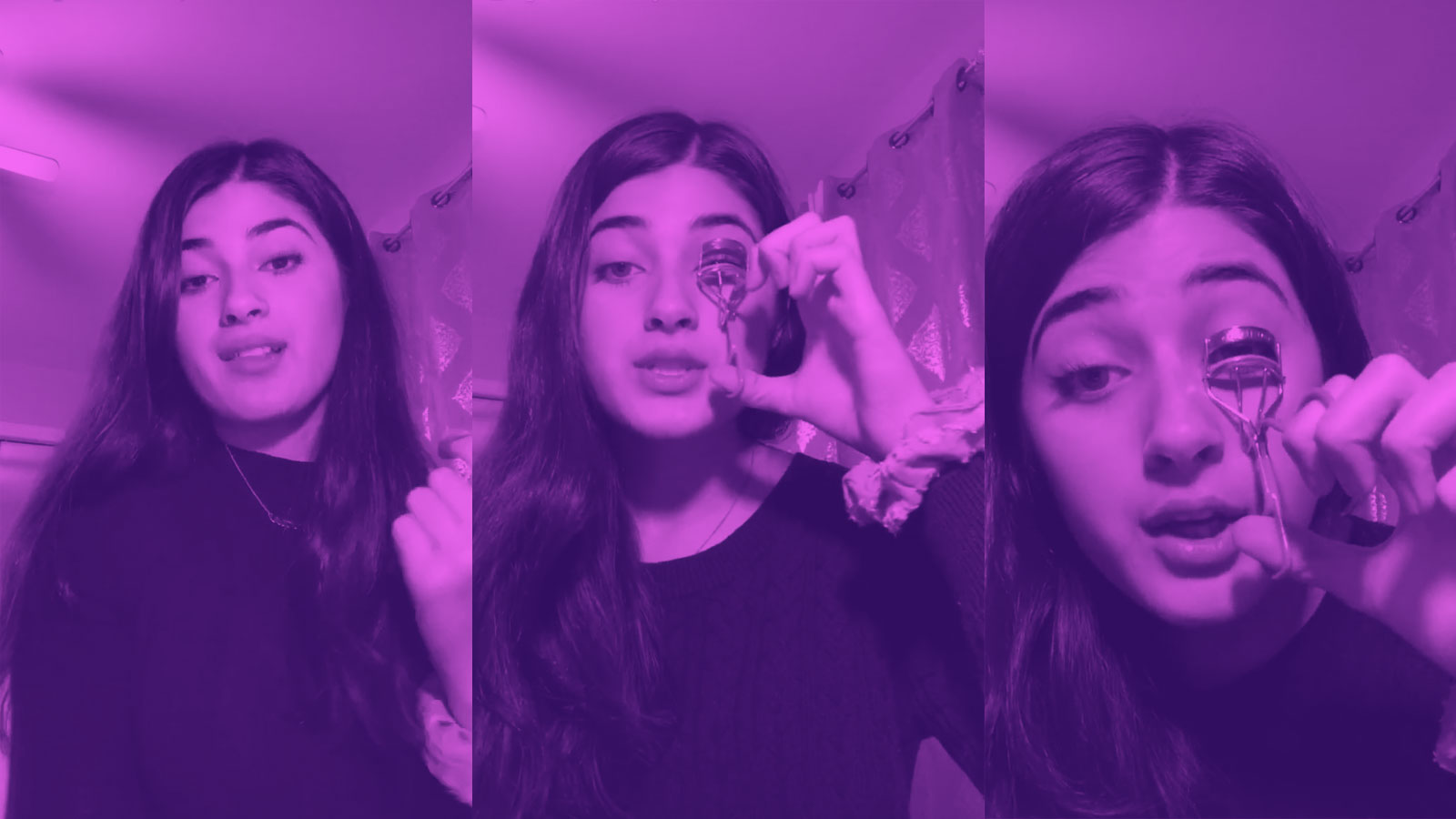This girl’s TikTok “makeup” video went viral for discussing the Uighur crisis

Feroza Aziz sneaked political commentary into a purported makeup video. The subsequent allegations of censorship give us a peek into TikTok’s fraught political future.
Umm, looks like a makeup video to me? That’s what’s clever about it. “Hi guys, I’m gonna teach you guys how to get long lashes,” says a girl expertly snapping an eyelash curler onto her left eye. Moments later, the girl instructs her viewers to “curl your lashes, obviously,” put their phone down, and search “what’s happening in China, how they’re getting concentration camps, throwing innocent Muslims in there, separating the families from each other, kidnapping them, murdering them, raping them …” She continues like this for another 20 to 25 seconds, and then, in the final seconds, she talks about eyelashes again. Aziz repeats the eyelash tip/protest/eyelash tip structure in two subsequent videos.
Who is she? The 17-year-old, who started a Twitter account on Monday evening as the video went viral, introduced herself as Feroza Aziz. In an interview with Rolling Stone. Aziz said that she went with the makeup routine to “reel in” users who might otherwise not have cared about the issues. “Let me pretend that this is a lash video they can watch and then I’ll hit them with what really matters, what they should really be caring about,” she said.
And what’s that? In her videos, Aziz is describing the Uighur crisis. The Uighurs are an ethnic group who practice Islam and live across Central Asia. Over the past year, China has detained an estimated one million Uighurs at camps in Xianjiang, which China has euphemistically called “vocational training centers.” Reports of rape, disappearances, and forced family separations have emerged.
Why all the subterfuge? By bookending the video with eyelash-curling tips, Aziz was also aiming to circumvent TikTok’s strict moderators. Leaked documents suggest that while the moderators don’t take down all political and protest content, they keep videos about certain subjects from surfacing on the platform’s all-powerful “For You” page, which is algorithmically curated. Documents unearthed by the Guardian in September suggest that this covers controversial political content such as reports about the Hong Kong protests, or the camps in Xianjiang.
Was Aziz banned? Unclear. Aziz’s TikTok page went down briefly on Wednesday morning but returned a few minutes later. Aziz alleged in a tweet that her account had been shut down for a month because of the eyelash video. A spokesperson for TikTok disputed that, telling the New York Times she’d been locked out of her account because of a video on a previous account that used a picture of Osama bin Laden, which violated a ban on terrorist content. Aziz says that video was designed to address slurs that Muslims like her experience.
Bigger picture: It all shows how the app is growing up and fast becoming a major political tool. And this isn’t the first time the Uighur crisis has been tied to TikTok. Earlier this year, Wired reported how expats subverted Chinese censors by posting silent videos of them crying in front of images of their relatives, launching the hashtag #WeHearU.
Censorship? But Aziz's protest (and subsequent video takedown and ban) also highlights Western fears about how political pressure is leading to apparent censorship on the Chinese app, as well as wider national security concerns about the flow of data back to China, recently raised by two US lawmakers. TikTok’s owner, Bytedance, has repeatedly said that it does not censor content over “political sensitivities,” but the controversy over this one video is unlikely to assuage those fears.
Update: we amended this story after the video on TikTok was removed
Deep Dive
Humans and technology
Building a more reliable supply chain
Rapidly advancing technologies are building the modern supply chain, making transparent, collaborative, and data-driven systems a reality.
Building a data-driven health-care ecosystem
Harnessing data to improve the equity, affordability, and quality of the health care system.
Let’s not make the same mistakes with AI that we made with social media
Social media’s unregulated evolution over the past decade holds a lot of lessons that apply directly to AI companies and technologies.
Stay connected
Get the latest updates from
MIT Technology Review
Discover special offers, top stories, upcoming events, and more.